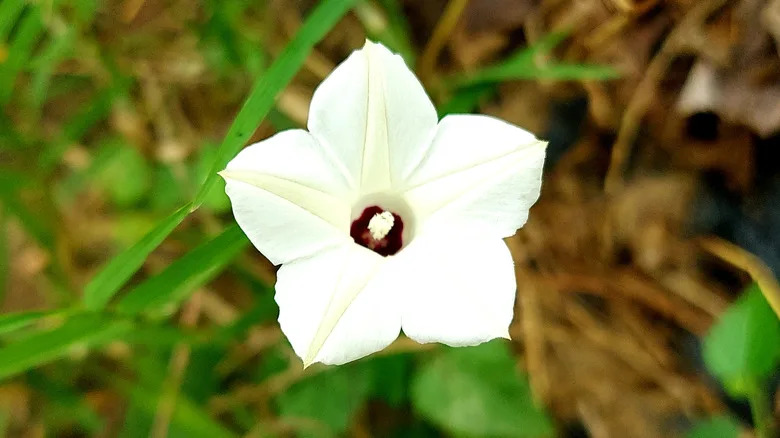Many gardeners and birdwatchers enjoy seeing hummingbirds zipping around their garden, drawn in by a patch of vivid blooms. Morning glories (Ipomoea purpurea) have long been a favorite for this reason. Their trumpet-shaped flowers are hummingbird magnets. But these showy vines come with some downsides. In cooler regions, they often struggle to thrive, and in warmer zones, they can become hard to contain and are considered invasive in many areas. That’s where a lesser-known alternative steps in: the Alamo vine. If you have successfully grown a morning glory vine, you will love growing the Alamo vine in its place.
Sometimes mistaken for its morning glory cousin, Alamo vine (Merremia dissecta) offers many of the same benefits without the issues that morning glories can have. This vine thrives in USDA Zones 7 through 11, making it a stellar choice for southern and southwestern gardeners. Native to the southern parts of the United States and Central America, the Alamo vine produces pale pink-to-white blooms with a distinct starburst center. Unlike the morning glory, the blooms remain open throughout the heat of the day. It grows quickly, tolerates heat and drought, and readily reseeds itself without taking over your entire yard. Even the seed pods are beautiful, but be aware that the seeds are poisonous if ingested.
It’s truly a lovely addition to your pollinator garden, attracting both hummingbirds and bees. Whether you’re seeking to replace an invasive vine, attract hummingbirds to your yard, or just want something that can withstand the summer heat, Alamo vine deserves a spot on your trellis or fence.
Read more: 25 Flowers That Hummingbirds Absolutely Love
Alamo Vine Is A Heat-Tolerant Hummingbird Magnet
Close up of a white Alamo vine flower with a purple-pink center – Nyu Gallery/Shutterstock
Alamo vine is part of the morning glory family, but it has a more refined growth habit that makes it easier to manage in the home garden. Unlike morning glory, Alamo vine can be controlled if necessary, with some easy pruning to control the spread. Its large, five-lobed leaves resemble maple foliage, creating a beautiful backdrop for its pale pinkish-white blooms. Each flower has a funnel shape with a darker pinkish-red throat, which is irresistible to hummingbirds, as they are naturally drawn to tubular blooms in red, orange, and pink colors.
This vine grows best in full sun, but it can tolerate partial sun. It will even grow in poor soil, although it prefers well-drained soil and even tolerates drought once established. It just doesn’t like standing water. Alamo vine blooms from late spring through fall, often long after more delicate flowers have faded. It can climb up to 10 feet in a single season and spreads easily by seed, though it’s not aggressive or invasive in most areas.
What makes it such a strong morning glory alternative is its resilience. While traditional morning glories can wilt under prolonged heat or require replanting each year, Alamo vine is a self-seeding flower that will improve your garden, no matter how hot it gets. Its reliability, paired with strong hummingbird appeal, makes it a smart pick for low-maintenance wildlife gardens.
Enjoyed this article? Get expert home tips, DIY guides, and design inspiration by signing up to the House Digest newsletter!
Read the original article on House Digest.


Comments are closed.